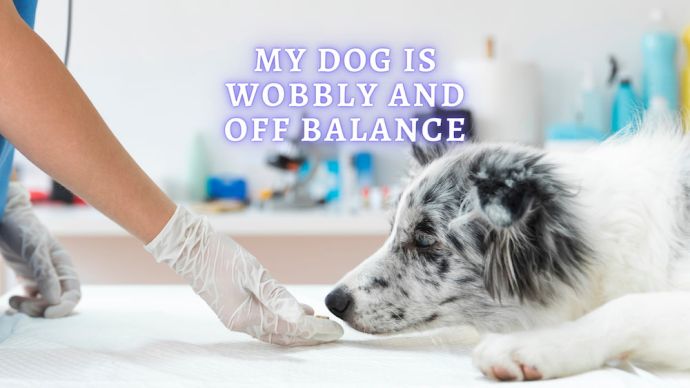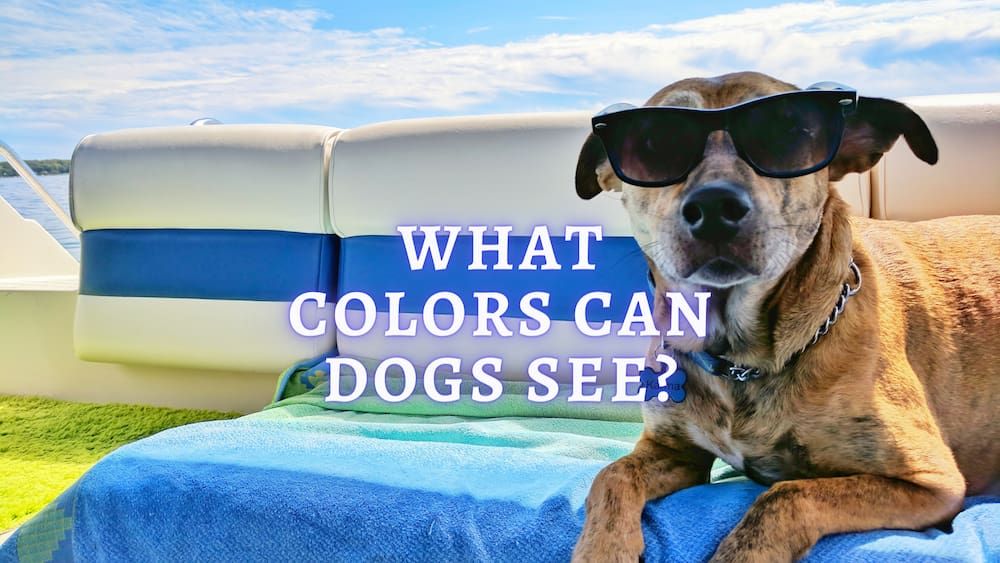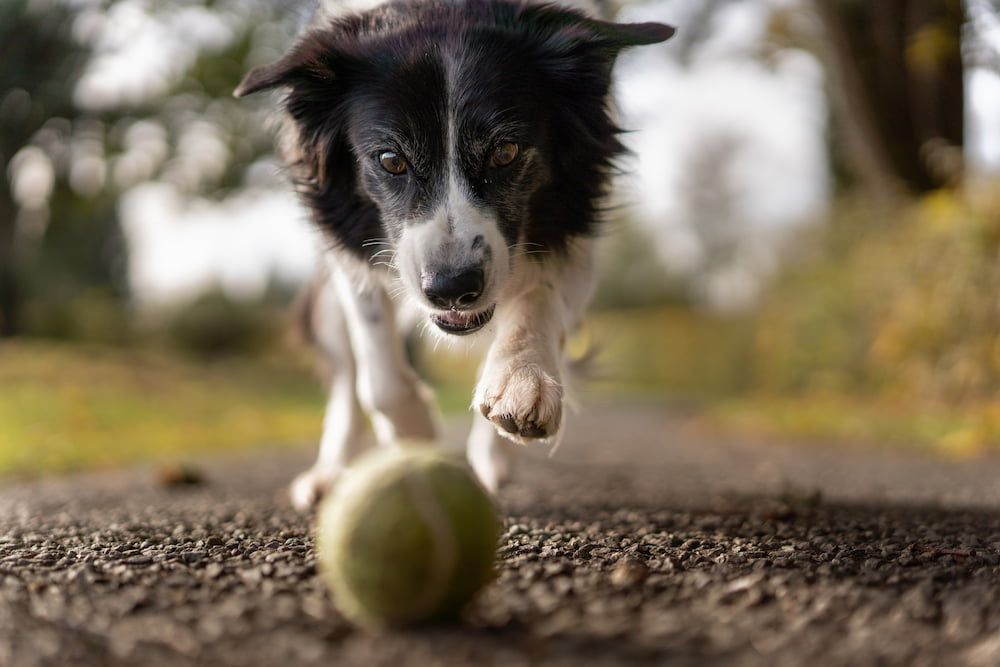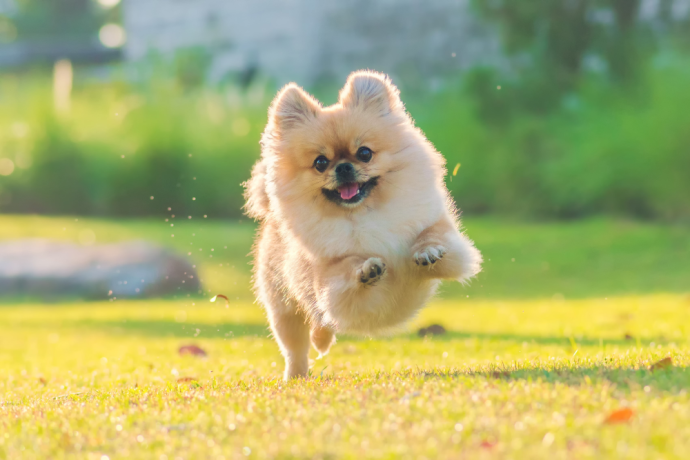What Colors Can Dogs See? Do Dogs Really See in Black and White?
Written by:
Author: Scott Jeffrey
Scott is a professional blogger with 12+ years of experience in writing, and holds an MA in anthropology. He has two cats as housemates. Also, Scott is passionate to research on pet-related topics such as dog training, puppy feeding, and cat health.
View all 63 articlesLearn about our editorial process and veterinary review board.
Viewed: 338
Updated on: 01/21/2022
One of the most common ideas that many pet owners have is that their dog can only see in the spectrum of colors that would be black and white to us. Rather than our dog living in shades of grey and black, new research would suggest that dogs can see a fair number of colors.
Do dogs really see in black and white?
Dogs can see in more than black and white, but they don’t have the same spectrum of colors that a human can see. When you look at a rainbow, you can likely see green, blue, indigo, violet, red, orange and yellow. Your dog sees the same image differently and not in the same colors that you would perceive them. They will view a rainbow but with the same type of perception that a person with color blindness might experience.
Dogs have been built by nature to thrive in the wild and their vision is different from ours so that they can see well in dim light and pick up movements at a long distance. Your dog can likely perceive shadows at a far greater level than you can and see movement in dim lighting at a better level. To achieve this level of perception, nature has designed their eyes to filter out certain colors and to make sure that they can hunt and capture movement better.
A dog won’t see in black and white like a television, but rather an adapted level of color blindness with enhanced perception for movement. It can be tough to simulate this experience as a canine would have it with our human eyes, but we can imagine how useful this could be for hunting and navigating in low light and varied weather conditions.
What is color blindness?
Color blindness is a term that we use to classify changes to vision based on the ability to perceive color. In humans, we might describe red-green or blue-yellow color blindness for the types of colors on the spectrum a person might not be able to see. Color perception can vary in humans and human eyes with color blindness will have difficulty distinguishing between colors because they are perceived similarly to that person. Blue-yellow color blindness for example makes it difficult for a person to see the differences between these colors. Red-green color blindness acts on the same principle: a person’s eyes cannot distinguish between the two colors.
Color blindness was studied throughout the 18th century by John Dalton and some of the first color blindness was confusing scarlet, green and blue, and pink. Color blindness occurs in 8 percent of human men and .5 percent of women. It is often caused by abnormalities in the molecules throughout our eyes. When the cone cells of our eyes are affected, it changes how the retina sees color. People with color blindness are missing the photoreceptor molecules that help them recognize specific wavelengths and this means that it will make it impossible for them to see certain hues. Red and green color blind people can tell the difference between hues in yellow and blue but all red might appear gray or brown.
Dogs do not experience color blindness from their natural wavelength, but rather their perception is closer to that of a color-blind human only with some enhancements to their sight for movement.
READ MORE: How To Bond With Your Dog
How do dogs see colors in reality?
A dog’s normal vision is closest to what a person with red and green color blindness would experience. There has not been any conclusive evidence into whether dogs experience variances of color blindness like people do.
A dog may not have the same Technicolor spectrum that humans do but they can often tell the differences between colors based on their visual differences. They may not see the same color a human would, but they have plenty of other sensory enhancements that can help them to tell the differences between objects, hunt well or perceive environments to guide their way through them.
A red ball might appear to be a darker brown to dogs with yellow, orange and green appearing as a shade of yellow.
Purple and blue may look the same, but it is easy for a dog to see the same shade of blue that a human would. A dog may find it difficult to tell the difference between red and yellow balls, but they can often use other senses like their heightened sense of smell to tell the difference between toys or objects with familiar scents.
READ MORE: Is BarkBox Super Chewer The Toughest, Most Durable Dog Toys?
What are the differences in the way dogs see the world?
Canine vision is considered to be less precise than human vision. Many dogs experience common color blindness, but their eyes can have enhanced night vision. For the most part, dogs’ visual acuity lacks the same depth perception as humans do and often rely on other senses to make up for deficits.
Dogs are primarily nearsighted when compared to humans and when looking at an object from the same distance, it is often easier for humans to focus on clear details, whereas finer details may be lost in a blur to most dogs. Canines can also be more sensitive to changes in brightness with colors and they may find it even more difficult to see differences in colors or the vibrant tones of colors with changing light.
Dogs have some advantages in their vision over humans to make up for some finer details. They can see with a greater range of peripheral vision than we do. They have pupils that maximally dilate so they can capture more light and see in dim light and they have more rods in the retina than humans. The rods in our retina are responsible for detecting shadow, light and movement even at long distances.
The excess cells lead to the red ball or shiny eye you might see in photos with your dog or at night. Cone cells in our eyes are photoreceptors, and these are less present in canines. Rod cells work better in dim light and for movement, cone cells are better for detecting color and brighter lights.
A dog with its broader range of vision does not get so much binocular vision, but rather a massive scope of the scene in front of them and better vision or detecting motion. The reflective membrane in their eyes improves night vision, and the broader range of view leads to better navigation in any low lighting.
READ MORE: Why Do Dogs Eat Grass?
Can my dog see in the dark?
Your dog can see better in lower lighting thanks to their improved pupil dilation and rod cell count. They can detect movement better in low lighting and have a larger corneal surface through the wider dilation of their retina. The reflective lens called the tapetum lucidum behind dogs’ eyes offers a superior level of night vision and a chance for your dog to take in more dim lighting in a dark scenario. If you have ever seen your dog peering at you with glowing eyes in the dark, this is them using their improved night vision to see you.
Wolves are best known for hunting at night, and their ability to hunt comes from their superior night vision. A wolf often has the upper hand hunting at night with its keen senses and sight. As many of our pets are derived from wolves in an evolutionary sense, it is no wonder that they have adapted the same senses and the same enhanced vision from their ancestors.
What color is the best for dog toys?
Dogs perceive color differently from humans, and this often means that the toys you buy for your pet may only be visually appealing to you and not your pooch. Your pup can appreciate the shades you are seeing in landscapes, they can likely spot small animals in a field or undercover much faster than you, and they can see some subtleties in the toys you grab for them too. Some dogs might be highly interested in blue teddy bears or a red ball. If you find a color your dog likes, such as a yellow tennis ball, seek out other toys they enjoy in the same color, and you will likely get them another toy they love.
Smell plays one of the most significant factors in choosing toys that pups love. Make sure they can get their scent on something before playing with other dogs and the same toy such as at the dog park, or they might get confused!
RELATED: Best Interactive Dog Toys
FAQ:
What is the easiest color a dog can see?
Dogs can often tell shades of blue apart from many other shades on the spectrum. A dog can have significant trouble telling shades of yellow and red apart.
What is the hardest color a dog can see?
Shades of yellow and red are some of the hardest colors for a dog to see. Most of the time the yellow tennis ball you may have and the red ball you have will look the same or just slightly different to your dog.
Are there colors dogs dislike?
Dogs don’t seem to prefer certain colors over others, but they often use their scent to bond with objects or choose items they enjoy rather than trust in the color of an object.
 Dog Care My Dog is Wobbly and Off Balance: What Should I Do? (Vet-Approved Advice)
Dog Care My Dog is Wobbly and Off Balance: What Should I Do? (Vet-Approved Advice) - 5748
- 0
 Dog Care Why Do Dogs Wink? Health and Behavioral Reasons Why Do Dogs Wink At You
Dog Care Why Do Dogs Wink? Health and Behavioral Reasons Why Do Dogs Wink At You - 1019
- 0
 Dog Veterinary Tips Tear Stains on Dogs: How to get rid of tear stains on dogs? (Vet Advice)
Dog Veterinary Tips Tear Stains on Dogs: How to get rid of tear stains on dogs? (Vet Advice) - 104
- 0
 Dog Veterinary Tips Why is my Dog throwing up: Causes and Preventing (Veterinary Advice)
Dog Veterinary Tips Why is my Dog throwing up: Causes and Preventing (Veterinary Advice) - 23424
- 5
 Dog Care Why Is My Dog Bleeding From Its Butt? Causes and treatment of rectal bleeding in the dog
Dog Care Why Is My Dog Bleeding From Its Butt? Causes and treatment of rectal bleeding in the dog - 22076
- 0
 Dog Care My Dog Keeps Scratching His Mouth: Reasons Why Your Dog Scratching Face
Dog Care My Dog Keeps Scratching His Mouth: Reasons Why Your Dog Scratching Face - 17561
- 1






















